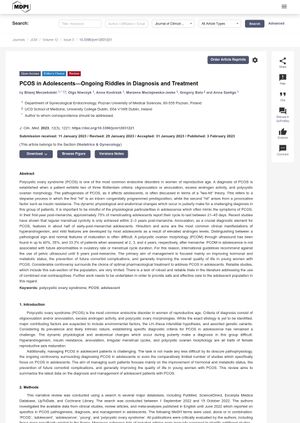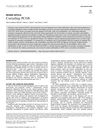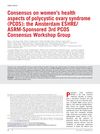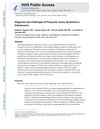PCOS in Adolescents—Ongoing Riddles in Diagnosis and Treatment
February 2023
in “
Journal of Clinical Medicine
”

TLDR Diagnosing and treating PCOS in teenagers is difficult, and the focus is on lifestyle changes and medication to improve health and prevent future issues.
Polycystic Ovary Syndrome (PCOS) in adolescents is challenging to diagnose due to puberty-related physiological changes that mimic PCOS symptoms. About 75% of menstruating adolescents report irregular menstrual cycles in their first years after menarche, but most achieve regular cycles within 2-3 years. Pelvic ultrasound for diagnosis is not recommended until 8 years post-menarche. PCOS is associated with metabolic comorbidities like insulin resistance, impaired glucose tolerance, and type 2 diabetes mellitus, and mood disorders like depression and anxiety. Adolescent girls with PCOS are 2.4 times more likely to suffer from depression, with 21% meeting the criteria for a depressive disorder. Management of PCOS in adolescents focuses on improving hormonal and metabolic status, preventing future comorbid complications, and improving quality of life, starting with lifestyle changes and followed by pharmacological treatments.




